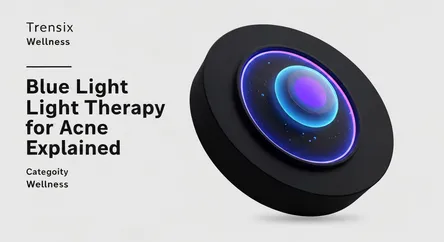Wellness
Blue Light Therapy for Acne Explained

A guide on how blue light therapy acts as a non-invasive treatment to combat acne-causing bacteria and reduce skin inflammation for a clearer complexion.
What is it?
Blue light therapy is a non-invasive skincare treatment that utilizes light in the blue wavelength range (405-420 nm) to target acne. This form of phototherapy is FDA-approved for treating moderate acne that hasn't responded to other therapies. It works by penetrating the skin to kill acne-causing bacteria called Propionibacterium acnes (P. acnes). These bacteria produce porphyrins, which absorb the blue light, creating a chemical reaction that destroys the bacteria without harming the surrounding tissue. It does not contain harmful UV rays.
Why is it trending?
The popularity of blue light therapy is rising as a gentle, drug-free alternative to traditional acne treatments, which can have side effects. The increasing availability of at-home LED devices, like masks and wands, has made this technology more accessible and affordable for consumers. This trend is also fueled by its non-invasive nature and minimal side effects, appealing to those seeking gentler skincare solutions. Celebrity and influencer adoption has further boosted its visibility, establishing it as a modern approach to managing acne.
How does it affect people?
Blue light therapy helps people by reducing inflammatory acne lesions, redness, and swelling. By killing bacteria deep within the pores, it helps clear existing breakouts and can prevent future ones from forming. Some studies have shown significant improvement in acne for many users after a series of treatments. The procedure is generally painless and safe for all areas of the body. People may experience minor side effects like temporary dryness or pigment changes. It's available through dermatologists or via at-home devices for regular use.